Happy spinnin’ chocolate Friday, peeps! One of my favorite things is surprising people with a new twist, a new story in the craft chocolate world. Artisan chocolate makers (like our very own
here on Substack) are people of passion, commitment, perseverance, and they’ve all got very messy, chocolatey fingers. The maker of today’s chocolate bar review has a particularly touching story.Before we dive in, a reminder that I do talks and tastings here in the Bay Area. If you’re local and would like to jazz up a family BBQ or get-together, a child’s birthday party, or just want your own private chocolate tasting, I’m an email away. Tasting packages are here, or contact me and we’ll put something custom together.
And as always, be sure to subscribe because the chocolate monster always needs to be fed…
Chocolate maker: Chocolat Philippe
If you take the time, you’ll find treasure. This holds true for travel, for reading, for food, and above all, for chocolate. For Philippe Smets, the founder of Chocolat Philippe, it was time spent in cancer treatment in Belgium that opened his eyes to the restorative, spiritual side of chocolate. As he explains on his company’s website, visitors couldn’t bring him flowers while he was in treatment because of his compromised immune system, so he asked them to bring chocolate. Over the course of several months, the chocolate brought in by his friends and loved ones led him to a place of peace, mindfulness, and healing.
Luckily for the world, Philippe survived. Through it all, the fine chocolate that accompanied his healing journey inspired him to bring that “unique moment of mindfulness, gratitude and focus” he had experienced, to others. As he tells it, “I founded Chocolat Philippe to create a world where people deliberately take the time to mindfully ground themselves and look for happiness in the small things.”
Location: New South Wales, Australia
Photography: As I explain below, the packaging Philippe has chosen for his bars are reminiscent of pinwheels. I just happen to have one… from South America (of course). We bought it for my daughter years ago when we were visiting family, and for some reason kept it, all these years. At one point I almost gave it away but… something told me, No Birgitte. Keep it.
Now I know why.

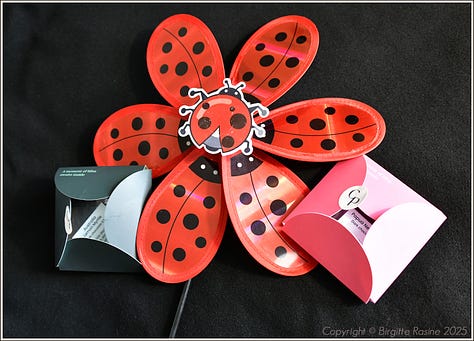
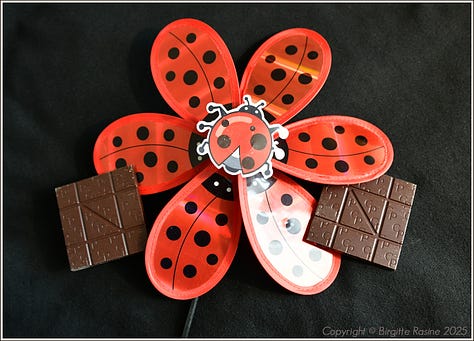
Cacao Muse review: I have served as a judge for the International Chocolate Salon since 2018. This spring was the first time I discovered Chocolat Philippe, a relatively new chocolate maker on the global stage (the company is just over a year old). The packaging immediately caught my eye. This isn’t your typical chocolate bar sleeve or box, which you open at the top or on the side. A Chocolat Philippe bar is square rather than rectangular, and like a rose, it blooms open in your hand. Very reminiscent of a pinwheel… so naturally, I had to include a real pinwheel in the tabletop.
If you don’t have an outstanding chocolate bar, no amount of artistry in your packaging will save the day for you. On the other hand, if your chocolate is exquisite, but its packaging is sub-par, it will dampen the overall experience for your buyer. Ideally, you want both—an exquisite bar and great packaging.
Two details in particular impressed me—and the third made me laugh:
First, every Chocolat Philippe package carries a note of acknowledgment of the ancestral land of the native people where the company operates: the Gadigal people of the Eora nation.
Second… inside the box, you’ll find a small square card with a QR code that leads you to that bar’s landing page on the Chocolat Philippe website. The Lemon Myrtle bar page, for example, tells you that the cacao comes from a family-run estate in Queensland. Try these out… hold your phone up to the screen and you’ll see the two webpages. A real treat!
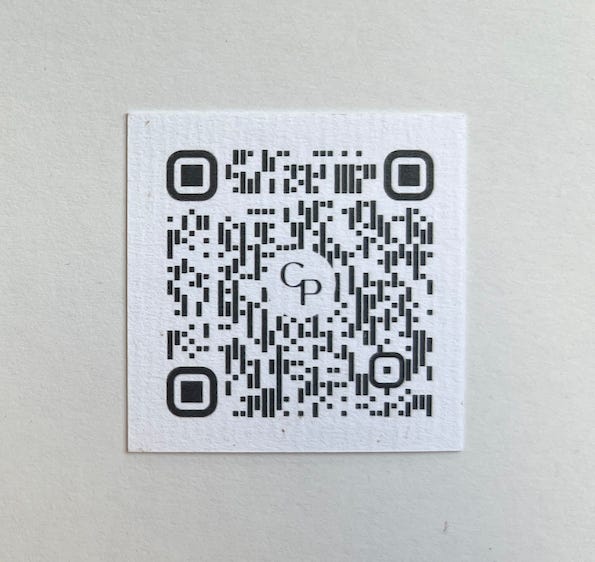

Left: Australia Lemon Myrtle; Right: Papua New Guinea Third… here is why you really need to pay attention to every little bit of text printed on a chocolate bar: Philippe prints actual '“Directions for use” on his bars. They’re simple, really:
Store in a cool, dark place.
Eat quickly to avoid sharing.
You hear that? No sharing your chocolate! Go ahead, tell your parents they were wrong.
My only complaint about the chocolate itself is an issue typical of many new chocolate makers: the texture is a little rough, a touch sandy on the tongue, which indicates it hasn’t been ground to a fine-enough particle size, perhaps not quite enough cacao butter, or the tempering process has to be, well, further refined. What we’re looking for is that silky soft smoothness that comes from years of experience. And those will come.
Now, on to the chocolate. We have two bars—a flavored bar made of Australian cacao with lemon myrtle, and a pure chocolate bar from Papua New Guinea.
Single Origin Australia Lemon Myrtle
Tasting Notes: A light touch of herbs diffuses throughout the bar, spiced by tangy lemon and other citrus notes. When you are so used to chocolate being always too sweet, it’s a delight to experience a very different flavor and taste.
Percentage: 67%
Origin: Australia
Ingredients: Cocoa solids (nibs, butter), raw organic cane sugar, lemon myrtle
Price: Varies; bars typically sold by box
Papua New Guinea
Tasting Notes: Floral blossoms, a touch of rum, notes of wine and wood, and a breath of raisins. Nice astringent bite as well.
Percentage: 71%
Origin: Papua New Guinea
Ingredients: Cocoa solids (nibs, butter), raw organic cane sugar
Price: Varies; bars typically sold by box
Thank you for joining me for another summer chocolate Friday. Stay cool, stay hydrated, and above all, do not share your chocolate bars! What you can—and should—share are these posts. See you next week!





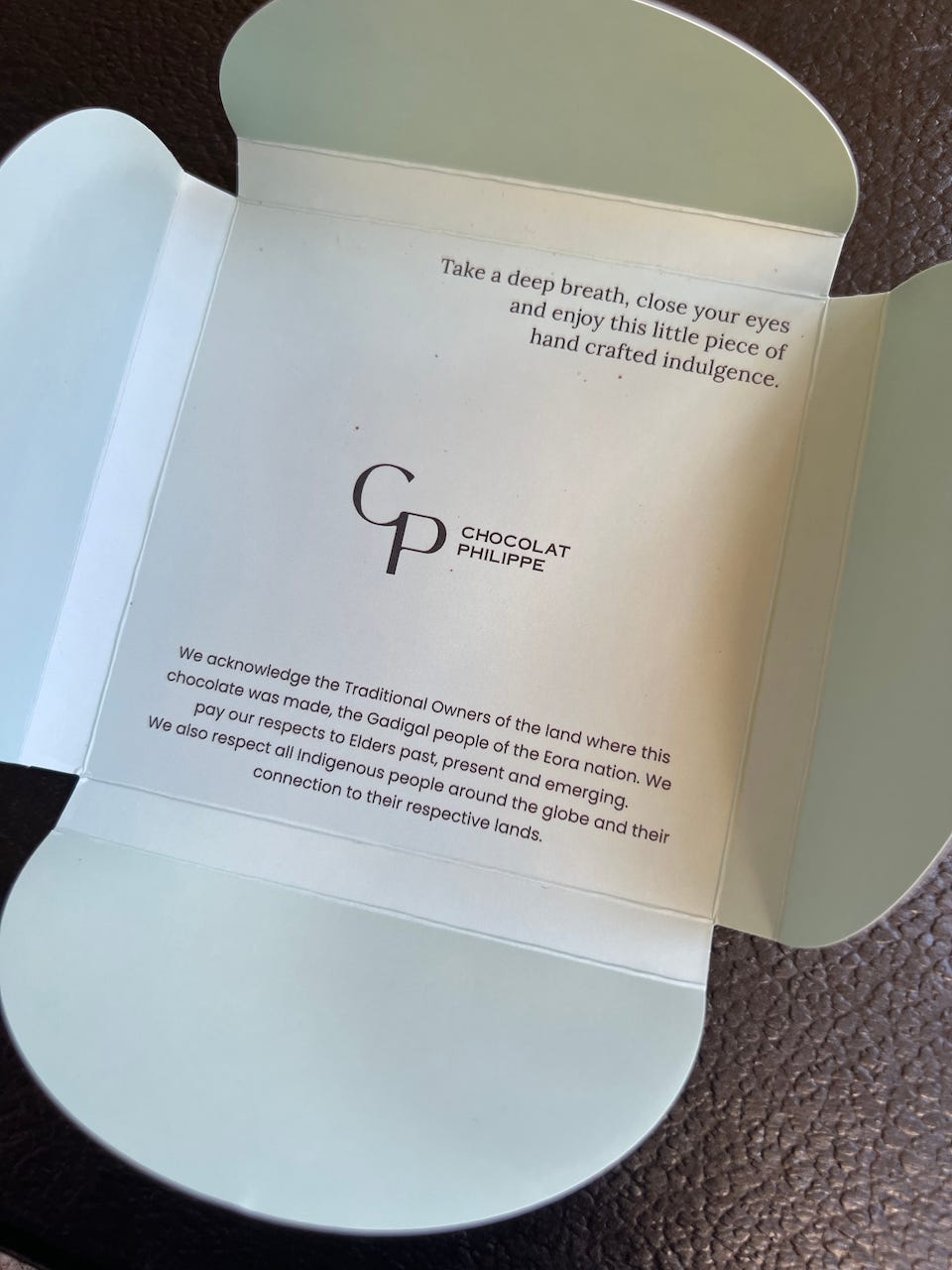
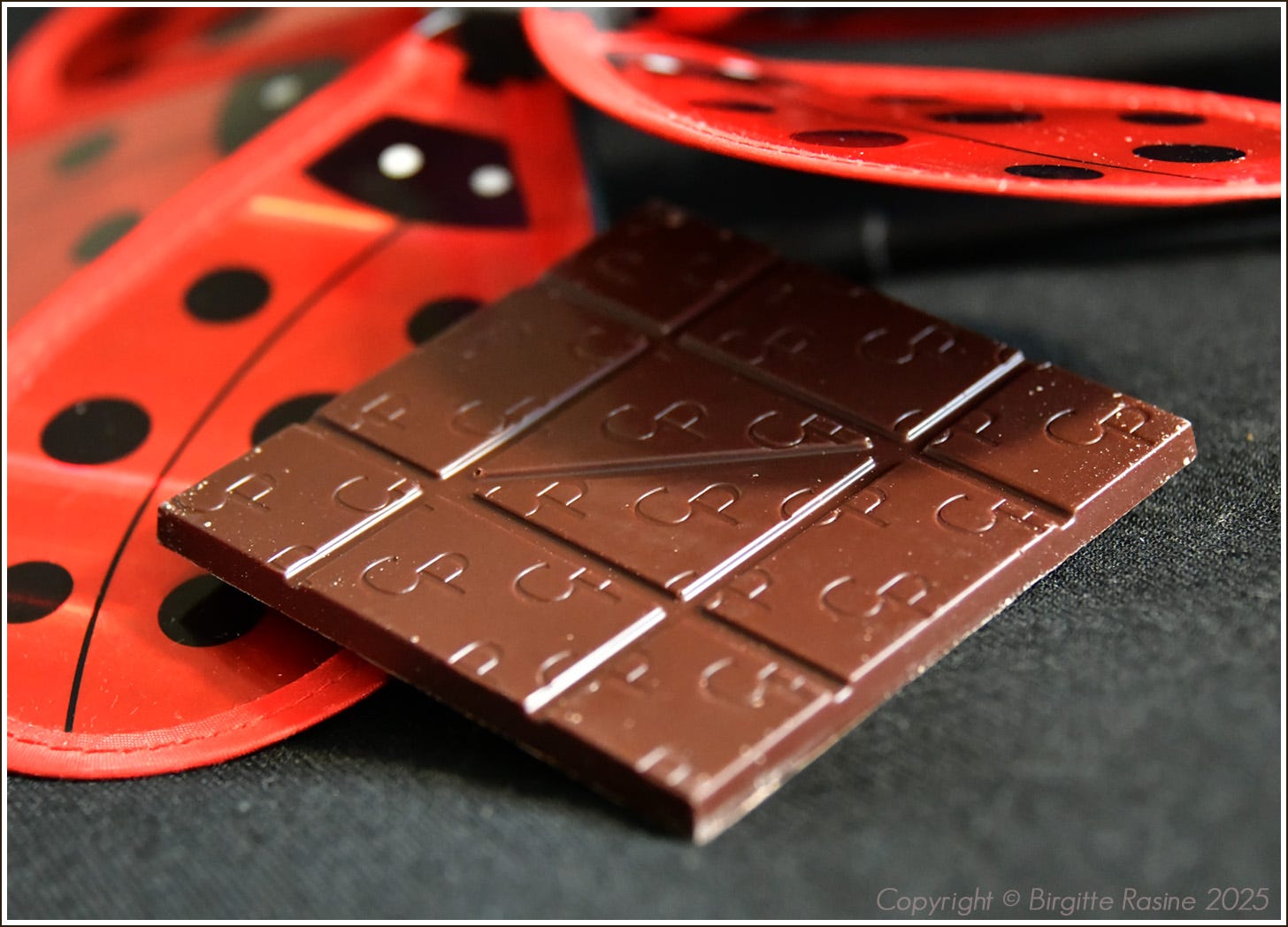

That's an amazing effect that chocolate had on Philippe as he recovered from cancer. I will remember that every time I eat chocolate.
Do you know about Tony's Chocolonely? I enjoyed it when I tried it, and their emphasis is on fair trade. I went to a film showing about this chocolate years ago, and it was wonderful! https://tonyschocolonely.com/